Once every two years, in Kenya’s southern Amboseli region, skilled Maasai warriors gather to chase a prize. But that prize isn’t a lion, as it once was — it’s a gold medal. And they’re competing in the Maasai Olympics, an extraordinary event blending ancient tradition with modern conservation that began in 2012. It started as a response to dwindling lion populations, changing environmental pressures, and a growing desire among the Maasai and other tribes of Kenya to engage more in wildlife conservation, in the Maasai Mara and beyond.
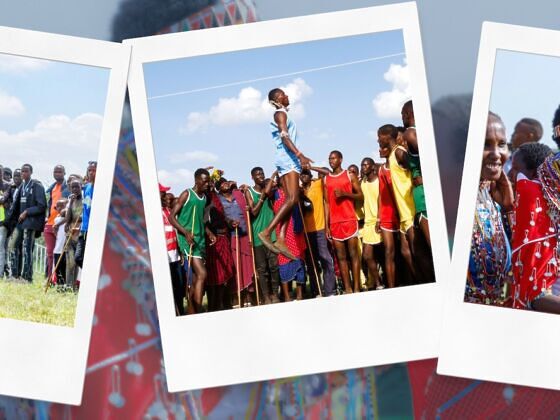

Camera Roll: the Maasai Olympics, Where Warriors Chase Medals, Not Lions
Qualifications and team selections for the games begin in the summer, and a series of tournaments in the fall leads up to the finals, held on the second Saturday of December. Athletes are bused to the event and camp on-site the night before the competition. Events are based on traditional Maasai skills, with slight tweaks to make them measurable and competitive. That includes spear throwing and rungu (club) throwing (aiming at targets, not lions), as well as distance running. High jump is also part of the event, with competitors able to reach impressive heights.
View this post on Instagram
The competition is held in Kenya’s Kimana Sanctuary, a 5,700-acre reserve that was the country’s first community-owned wildlife conservancy. Judging is done by a panel that includes a local Maasai Chief. 2024 was the sixth year of the event, as the 2020 events were cancelled due to COVID. Though the first events didn’t take place until 2012, the idea for the Olympics dates to 2008, when Maasai leaders had cancelled the lion hunts, but still wanted a way for young Maasai men to prove their strength and skill.
The Maasai Olympics’ main sponsor is the Big Life Foundation, a conservation organization dedicated to protecting wildlife and ecosystems in East Africa. It runs anti-poaching initiatives, human-wildlife conflict mitigation programs, and community-based conservation efforts that promote coexistence between wildlife and local communities — such as the Maasai Olympics.
While spectators can attend the event, the purpose is to celebrate the athleticism and community pride of participating Maasai villages. Viistors who do want to attend will need make their own way to the games. The only lodge in Kimana Sanctuary is Angama Amboseli, which helps sponsor the event. It has exclusive rights to game drives within the Sanctuary, though exceptions may be made for attending the games. Lodges outside the reserve around the town of Kimana, such as Amboseli Sopa Lodge, Amboseli Eco Camp, and Tawi Lodge, usually take guests on game drives in nearby Amboseli National Park.
Here are some of the best shots from 2024 Maasai Olympic Games in southern Kenya.
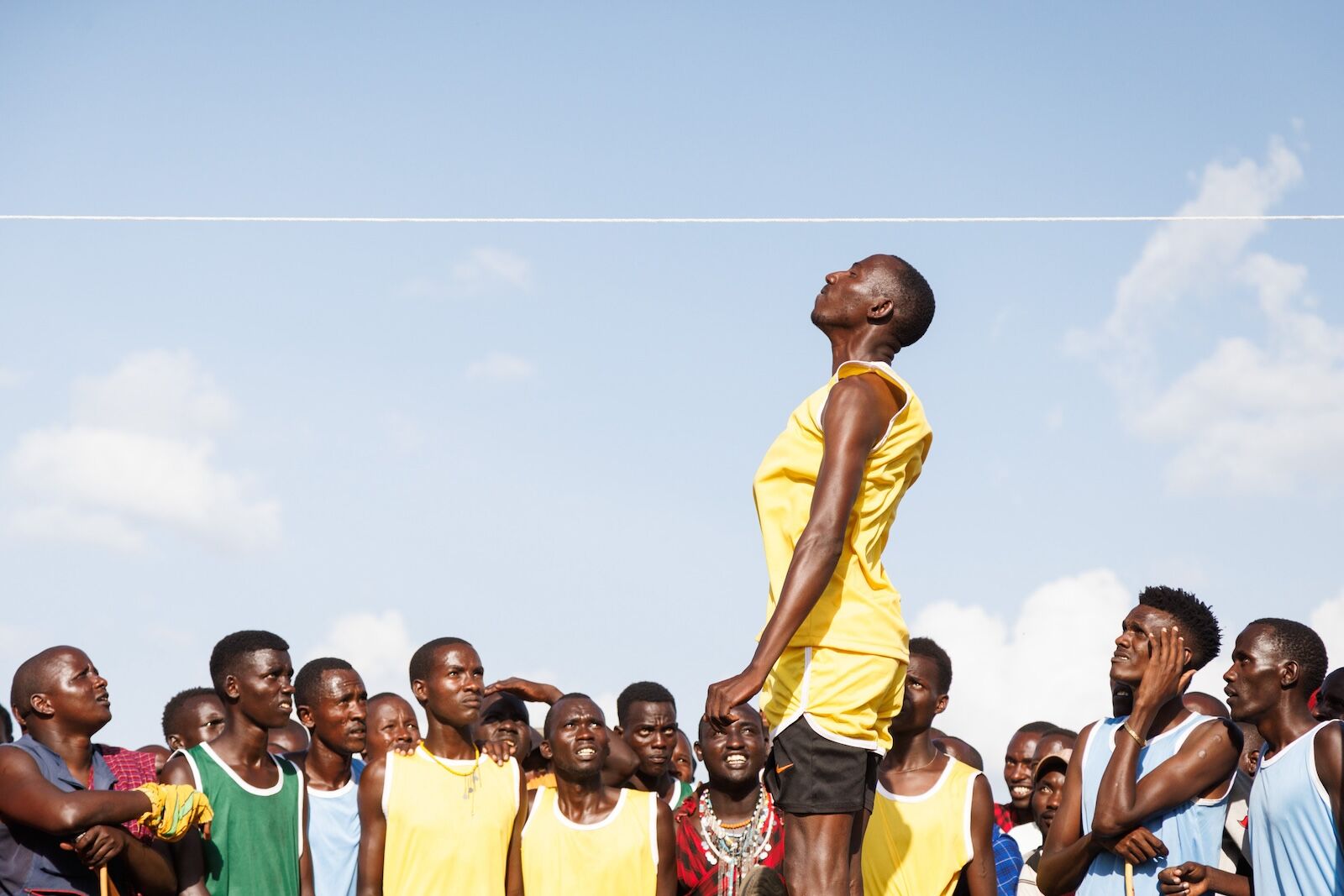
The high jump, or “Maasai jump”, is a display of strength and agility in Maasai culture, and now a celebrated event at the Maasai Olympics. The high jump is known as adumu and traditionally performed as part of the Maasai Eunoto ceremony, where young men transition to warrior status. It’s usually accompanied by deep, resonant singing. At the Maasai Olympics, it becomes a test of athletic skill that fosters unity and cultural pride, even among competing athletes. Photo: Big Life Foundation/Jeremy Goss
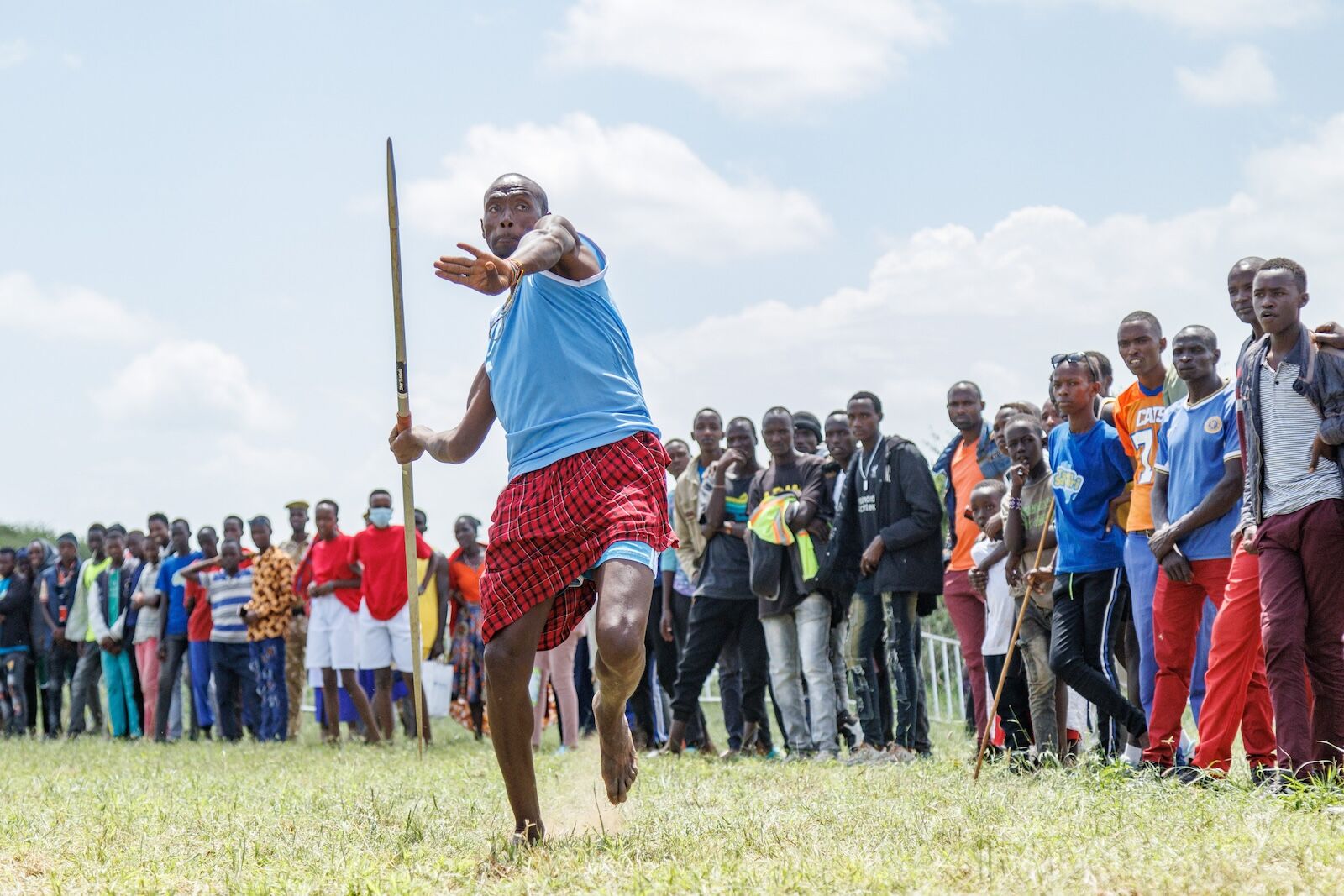
Spear throwing is one of the most thrilling events in the Maasai Olympics. It harkens back to the days when precision and power with a spear were essential for hunting and survival. Today, the competition honors these skills while shifting the focus to conservation, eliminating the hunting part but maintaining the skill and athleticism. Participants are judged on distance and accuracy. The transformation of the spear from a necessary hunting tool to a cultural and ceremonial icon highlights the Maasai Tribe’s creativity in pushing for conservation without sacrificing strong family traditions. Photo: Big Life Foundation/Jeremy Goss
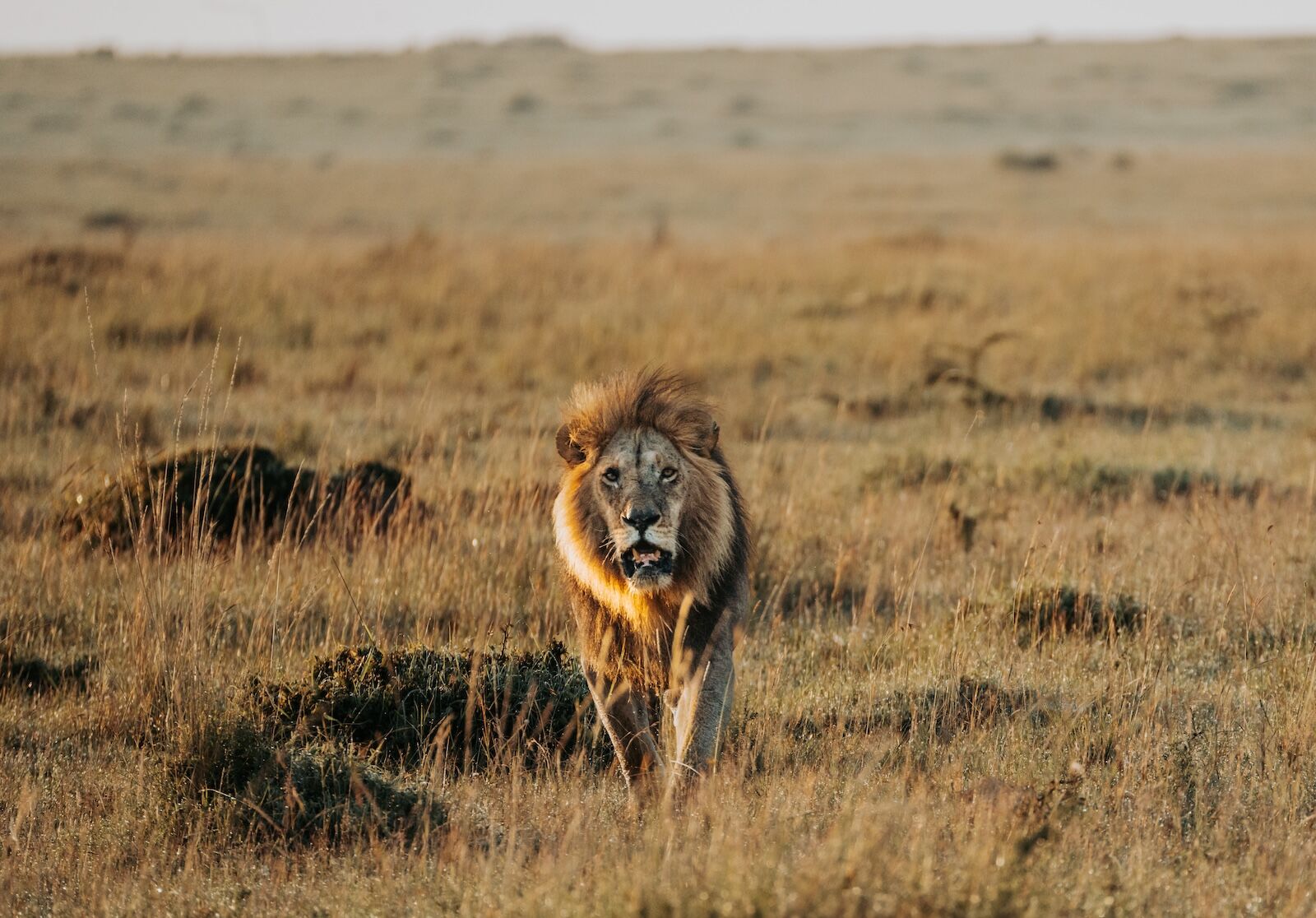
Traditional Maasai lion hunting, known as olamayio, was a rite of passage for young warriors (moran) to demonstrate courage, strength, and the ability to protect their communities from predators. But for that reason (and many others, in larger part), Amboseli’s lion population had dropped to about 50 individuals by the early 2000s. Fortunately, thanks to conservation initiatives from the Maasai and others, their numbers have rebounded, and are now more than 200. Photo: Suzie Dundas
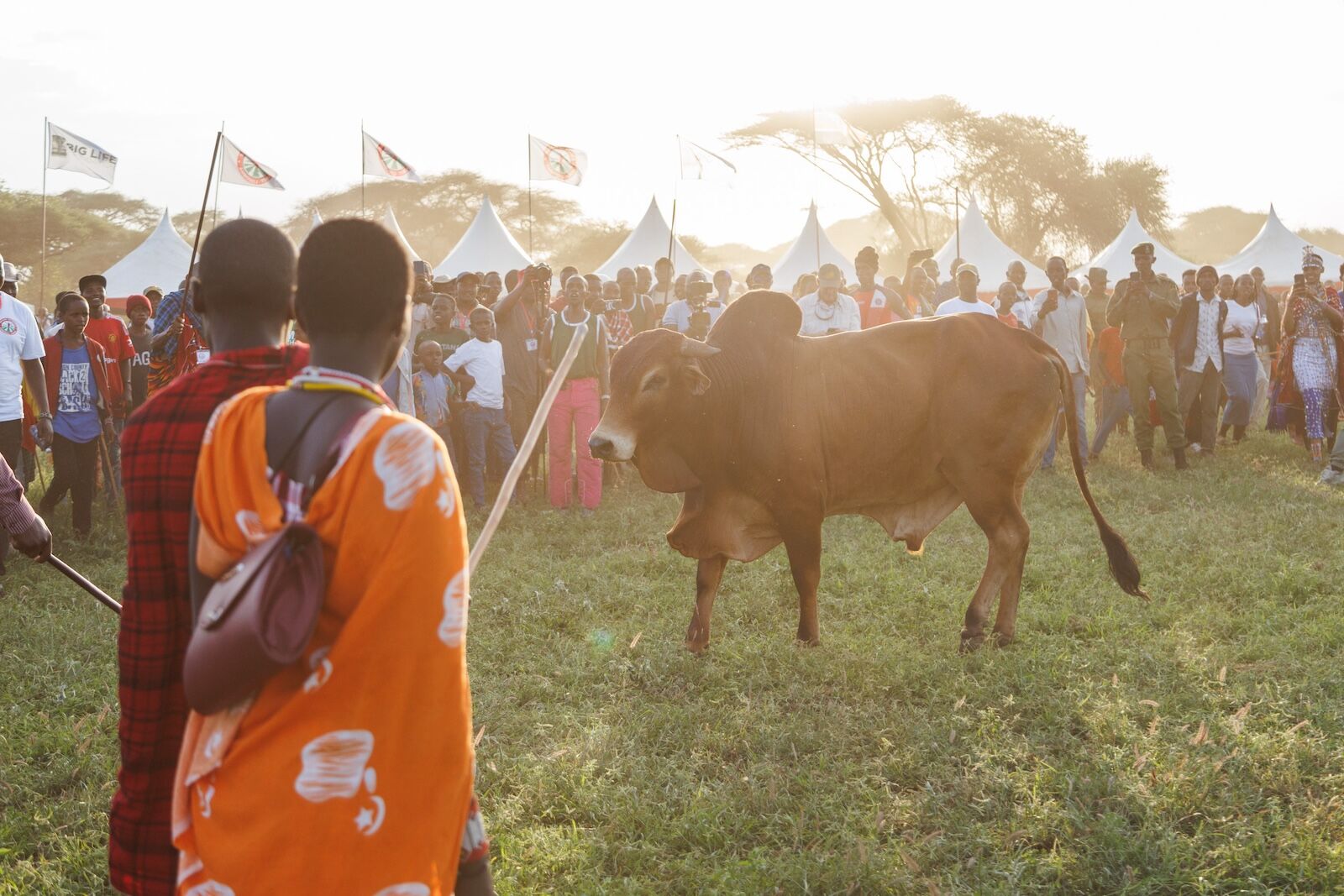
In addition to cash prizes, the winning team takes home a prized Maasai bull, seen above. This year’s bull was donated by a local community member, showing how local support is growing for the event. Many Maasai people have cows and livestock, whether raising them is their primary profession or not, and high-quality bulls are the most valued of all cattle. In the past, men were measured by how many cattle they owned, and bulls were often given as wedding dowries. Today, they still symbolize wealth, status, and sustenance. Photo: Big Life Foundation/Jeremy Goss
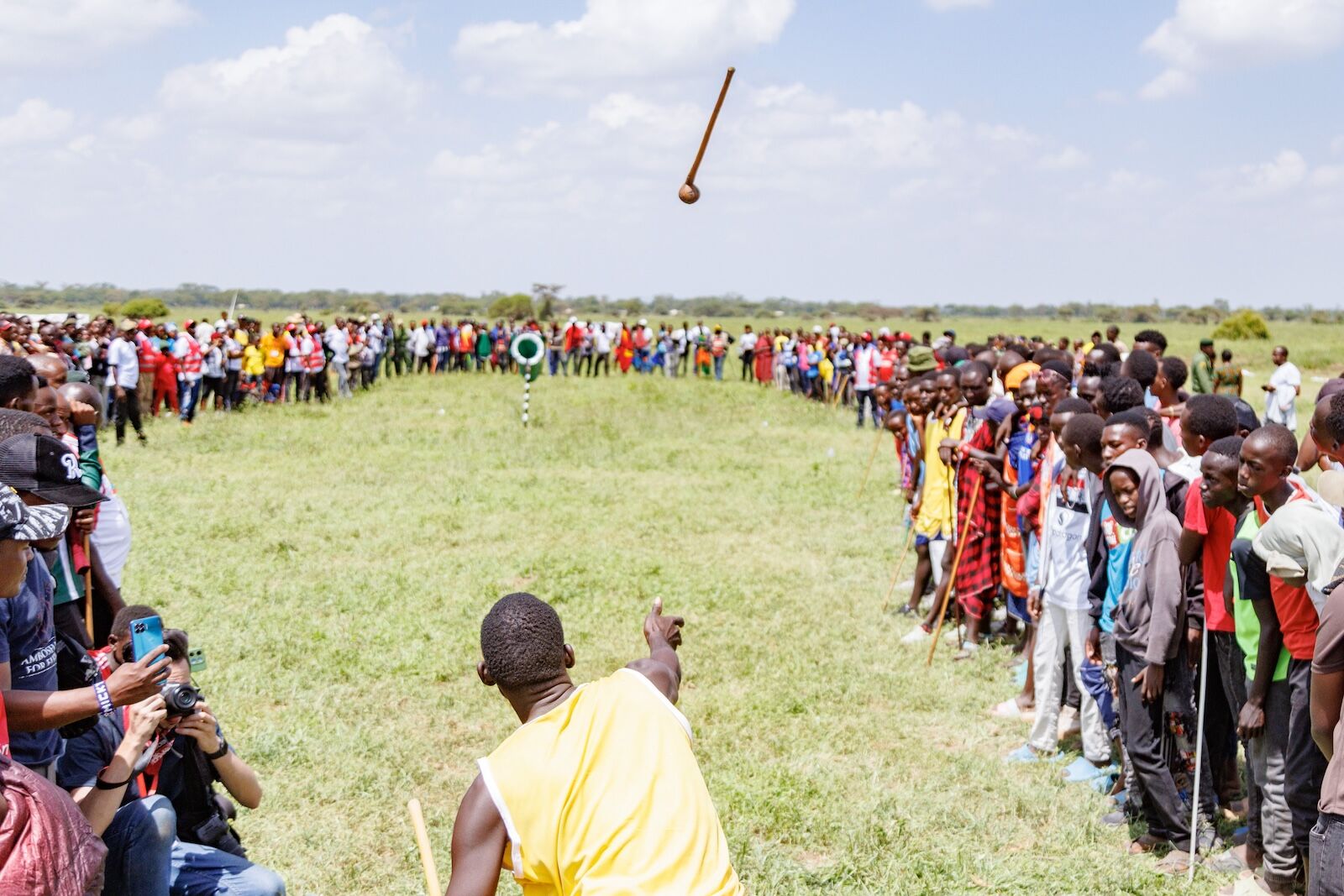
In this photo, a competitor throws a rungu, or traditional wooden club, hurling it at a target to test both skill and strength. Historically, the rungu was a weapon used for defense and hunting, and is usually made from a native hard wood like olive or acacia. It’s usually 1.5 to two feet long, and can weigh up to two pounds. Photo: Big Life Foundation/Jeremy Goss
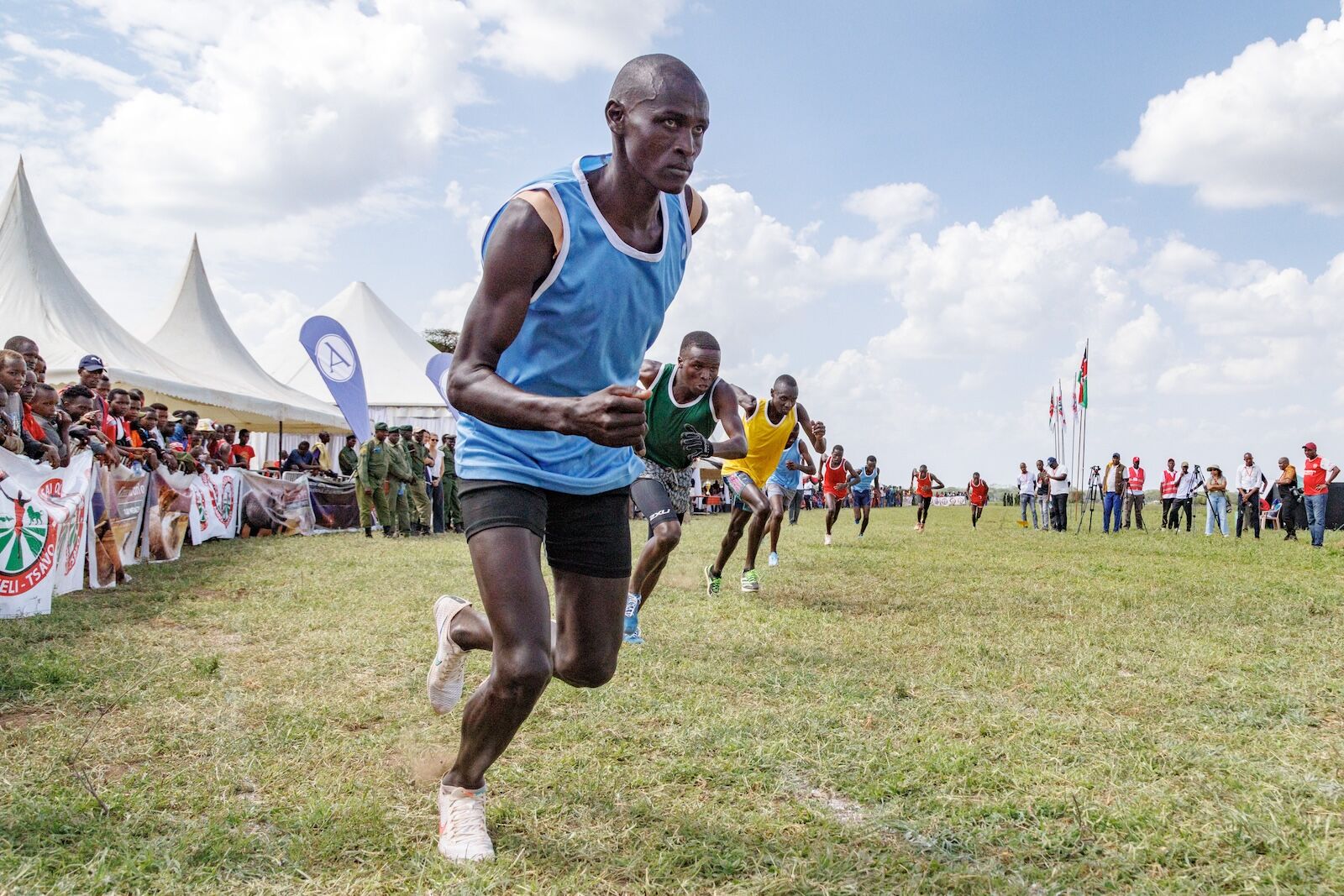
Traditionally, Maasai lifestyles have been semi-nomadic, with people spending much of their lives walking long distances across the open savannas to tend to livestock. The physically demanding way of life means many Maasai have excellent stamina and running abilities, and running competitions are an important part of the Maasai Olympics. In this photo, runners compete in the 800-meter race as spectators and photographers look on. Photo: Big Life Foundation/Jeremy Goss
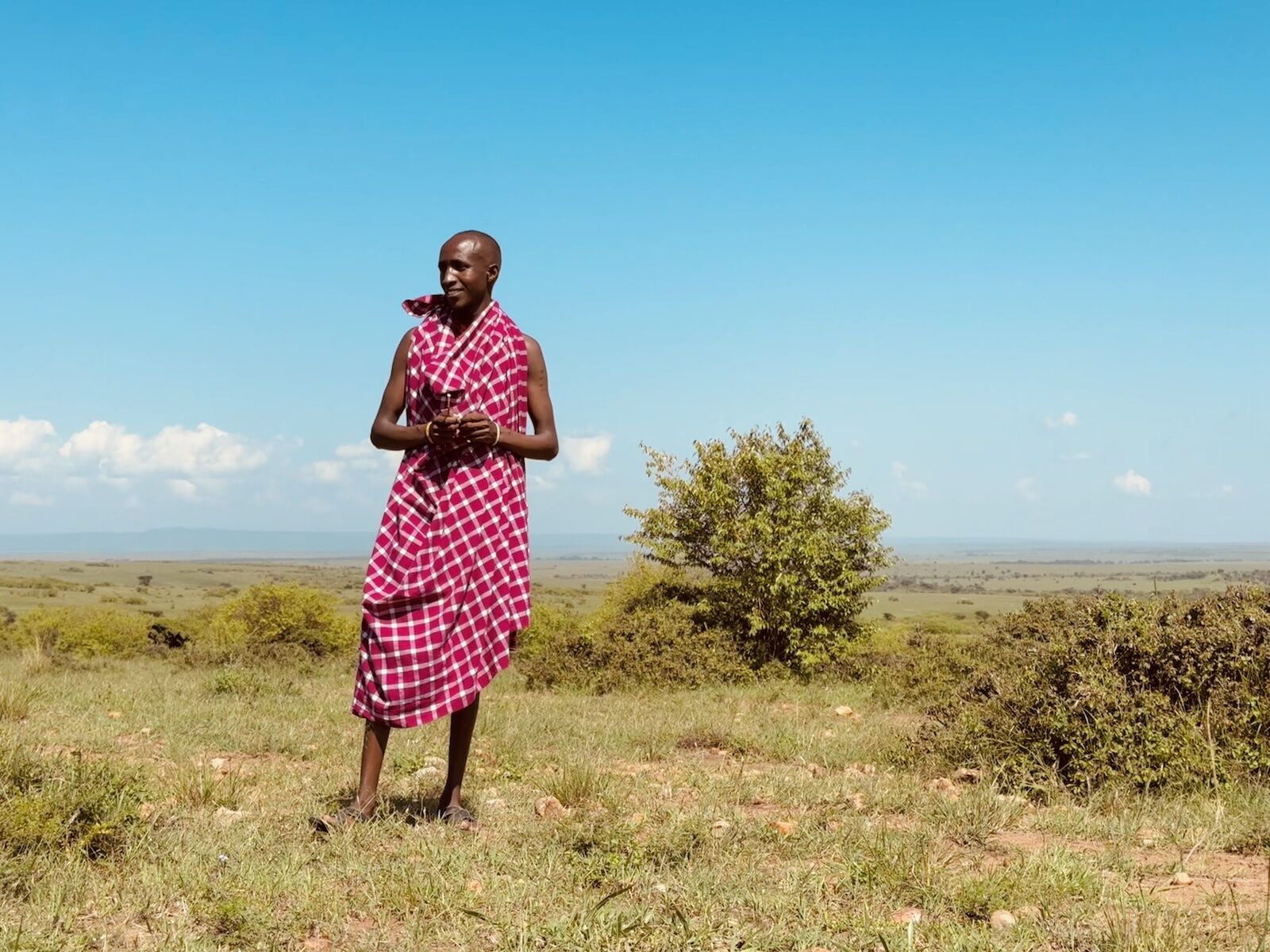
Many younger generations of Maasai still live in the Mara, and have applied the Tribe’s long-standing knowledge of local flora and fauna to conservation and tourism roles, such as Emmanuel, pictured here. He lives near the Maasai Mara, and while he still owns and raises cattle, he works full time as a naturalist and guide, taking tourists and visitors on educational bush walks through the Mara and nearby reserves. Photo: Suzie Dundas
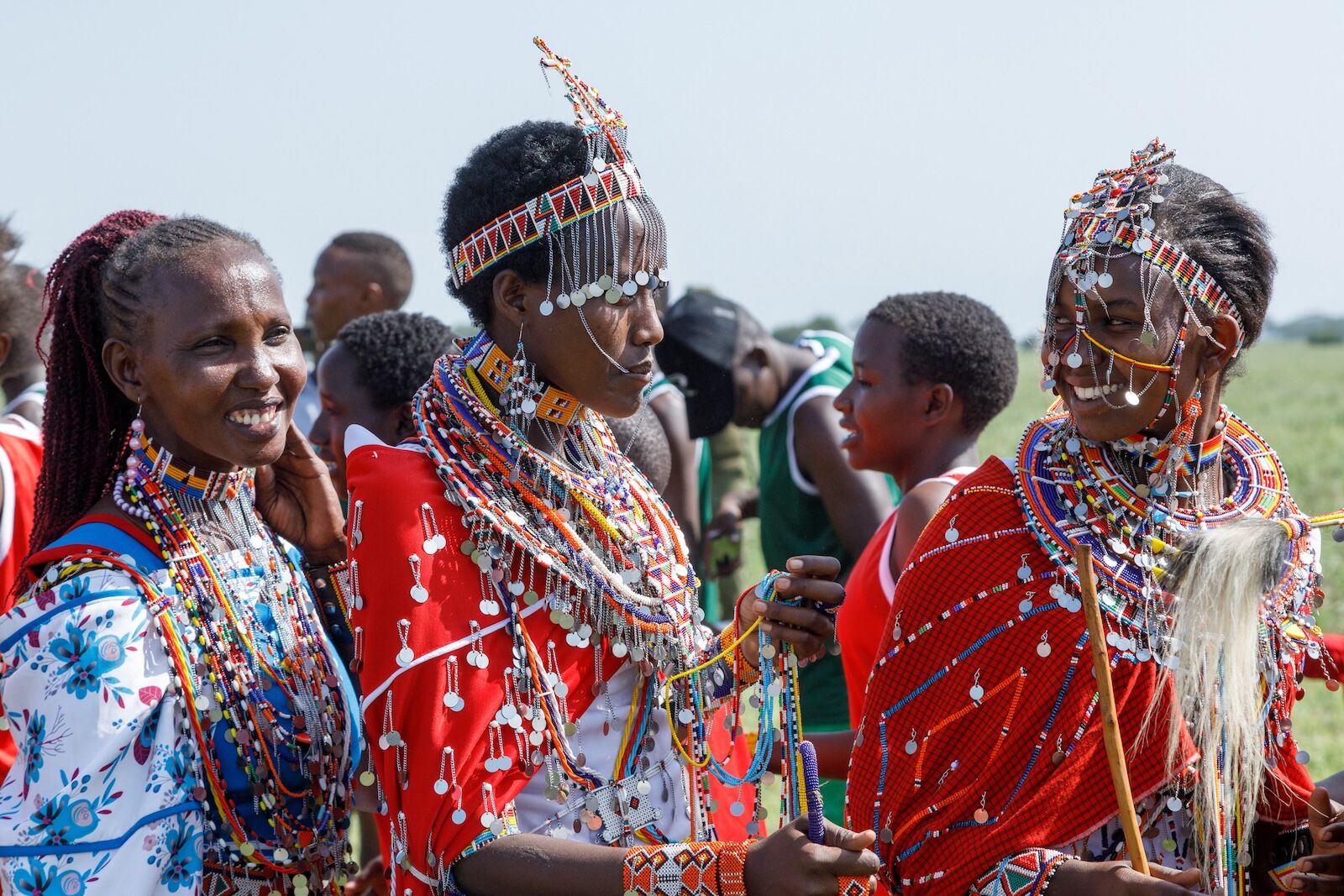
These Maasai women are spectators at the event, wearing traditional beadwork. Beading is a tradition passed down through generations, with women learning the skill at a young age. Beading can convey identity, like social status, age range, whether or not they’re mothers, and more. Though it’s traditionally only men who would hunt lions, the Maasai Olympics included women’s 100-meter and 1500-meter races, with more planned in future competitions. Photo: Big Life Foundation/Jeremy Goss
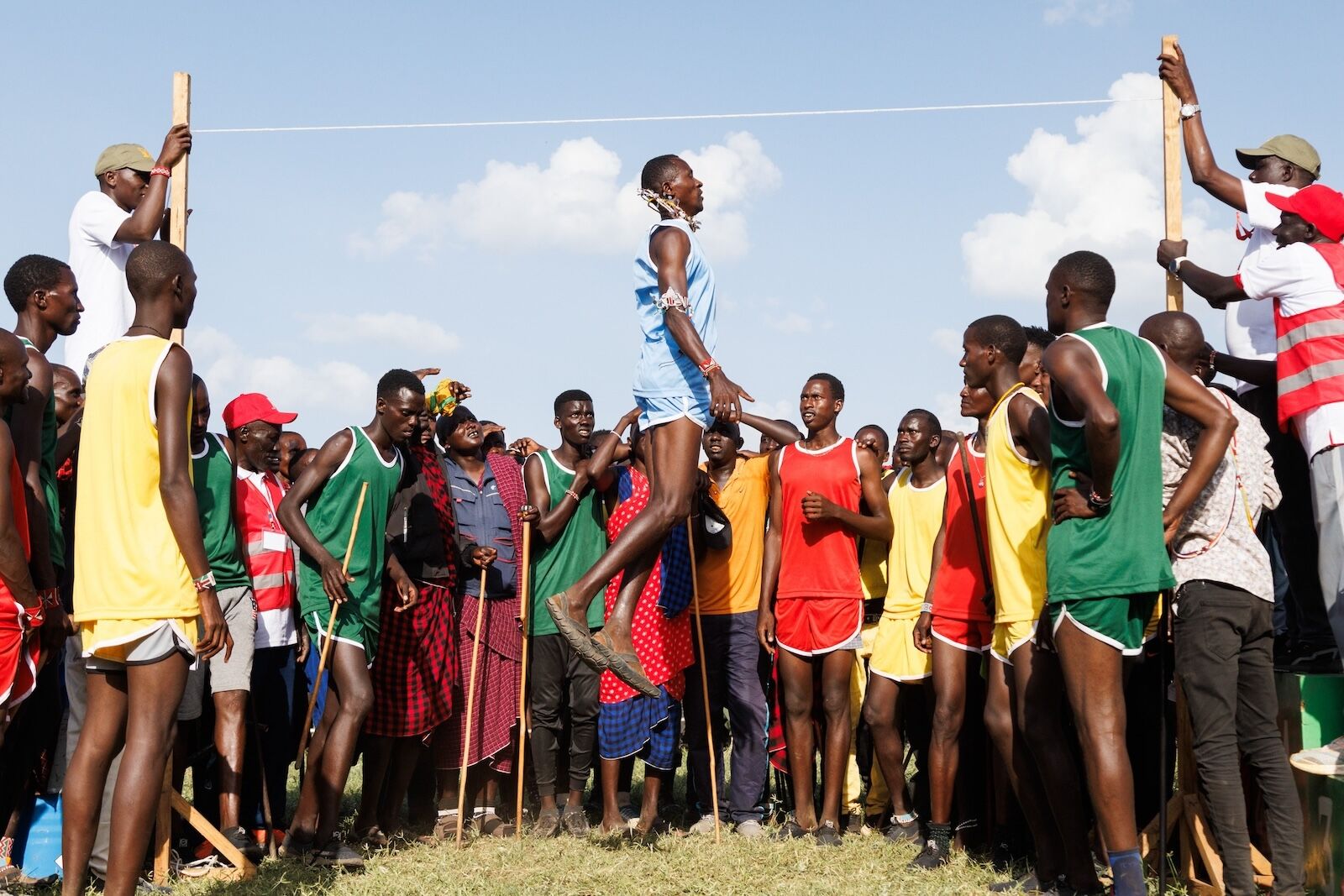
The high jump is usually one of the most popular events in the Maasai Olympics. The winner of each individual event gets the equivalent of about $200, with smaller awards for second and third. It’s a significant amount of money, especially as many of the athletes are in their late teens or early 20s. Photo: Big Life Foundation/Jeremy Goss
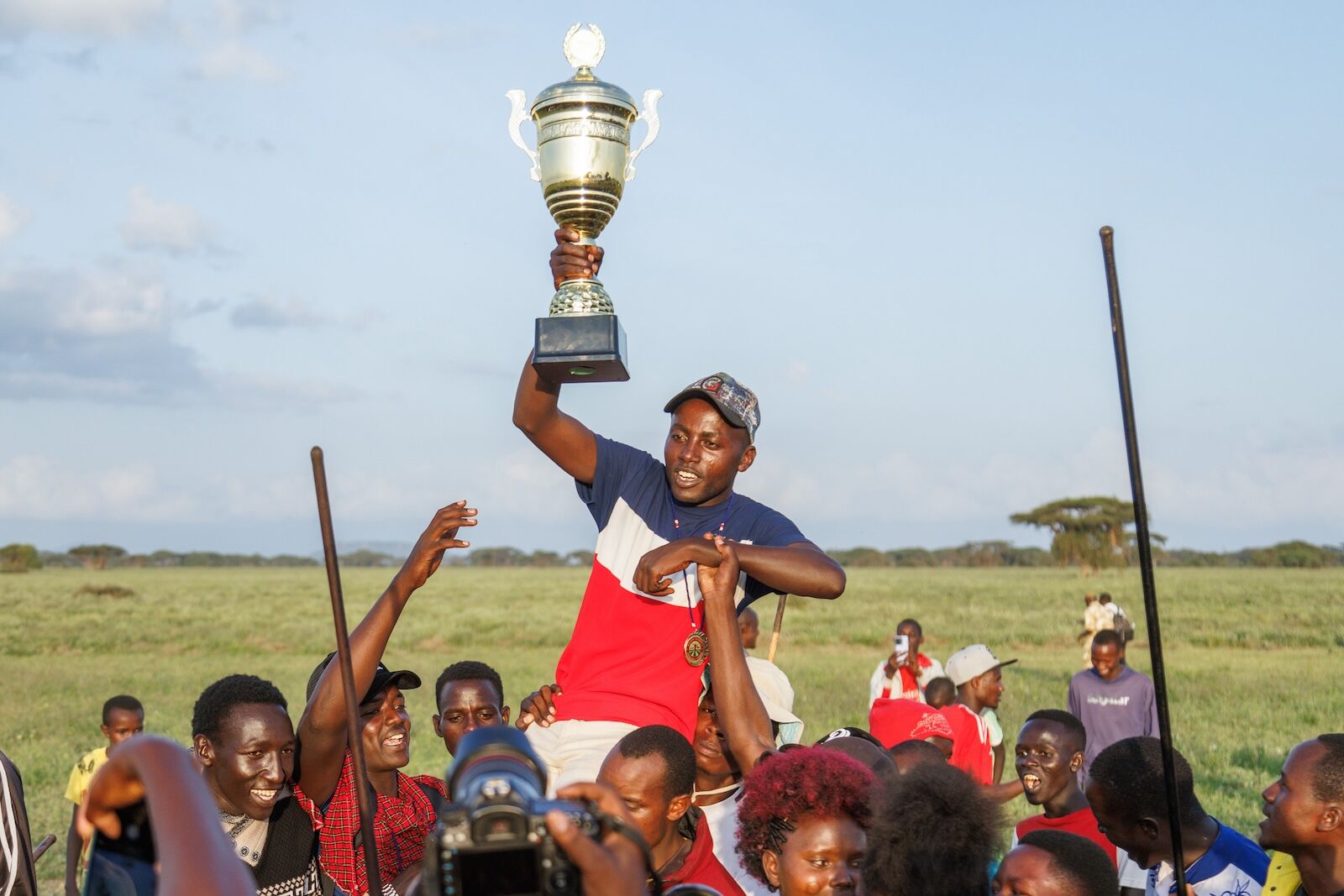
Competitors in the Maasai Olympics come from villages from around the Amboseli ecosystem, specifically Rombo, Mbirikani, Eselengei and Kuku. In this photo, the winning team from Mbirikani Manyatt lifts their coach in the air as he holds the winning cup. Photo: Big Life Foundation/Jeremy Goss